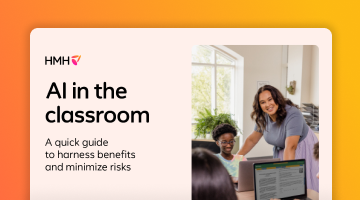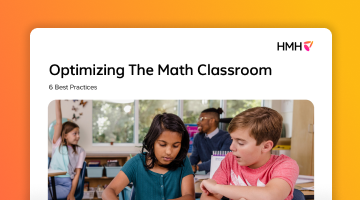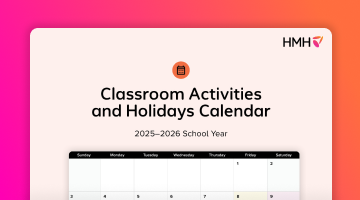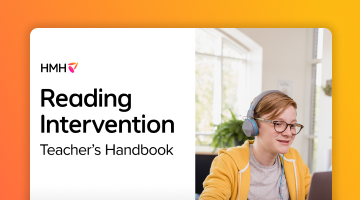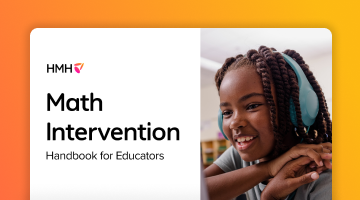
When you see a classroom in the movies, it's usually whole-group instruction that's shown. It looks like a teacher addressing a captive classroom of students with a lesson and students taking notes. This used to be the primary method of teaching, but now it’s common to use a variety of teaching strategies, such as individual or small-group instruction. However, whole-group instruction is an effective teaching strategy to deliver information to a group and is still widely used in classrooms today.
Definition of whole-group instruction
Whole-group instruction is a teaching method where the teacher delivers a lesson to the entire class simultaneously. This approach promotes a shared learning experience and ensures that all students receive the same information at the same time. Typically, whole-group instruction involves direct teaching methods such as discussions and demonstrations that allow the teacher to address the entire class collectively.
Why is whole-group instruction important?
Whole-group instruction is important because it ensures that all students receive the same foundational knowledge, which is essential for building a good understanding of the subject matter. It can also be more efficient. Teaching the entire class allows the teacher to cover the same material to a group. It can also give students the opportunity to ask questions or share ideas with their whole class. This can help to build classroom community. For example, if multiple students have confusion around a topic it allows the teacher to clarify the lesson to everyone.
Whole-group vs. small-group instruction
While whole-group instruction involves teaching all students together, small-group instruction divides the class into smaller groups for more personalized learning experiences. Small groups allow for targeted teaching based on students’ specific needs, while whole-group instruction focuses on delivering content to all students simultaneously.
It can also be argued that whole-group instruction involves less student interaction. Small-group instruction encourages more active participation and discussion among students. However, both provide opportunities for the teacher to engage with students and give feedback.
One major factor to consider when looking to use whole-group or small-group instruction is the ability to differentiate in the classroom. Small-group instruction provides more opportunities for differentiation, catering to the diverse learning preferences and abilities within the classroom. Whole-group instruction lends itself to teaching the entire classroom. However, it can still be differentiated at the whole-group level, for example, by explaining ideas using different modalities or senses.
Advantages and disadvantages of whole-group instruction
As with any method of teaching, there are advantages and disadvantages to using whole-group instruction in your classroom. It can help to assess your goals for the lesson, the academic level of your classroom, and your time and resources for instruction.
Whole-group instruction benefits and advantages
- Shared learning experience: Promotes a sense of community and collaboration among students, encouraging peer support and interaction and creating a common knowledge base.
- Efficiency: Allows the teacher to cover content to the entire class at once.
- Classroom management: Easier to manage the classroom when all students are engaged in the same activity.
Disadvantages of whole-group instruction
- Limited individual attention: Students may not receive as much personalized support, but new tools are available that help address this need.
- One-size-fits-all approach: This method may not cater to the individual learning needs and differences of all students.
- Challenges in assessment: It can be difficult to assess individual student progress and understanding during whole group instruction. This is where tools like HMH’s Performance Suite can help you in the classroom.
Tips for differentiation during whole-class instruction
While you might think of small-group instruction as the method best for differentiation in the classroom, there are still ways to address different student needs with whole-group instruction. One way is to incorporate different teaching and learning strategies, such as visual aids, hands-on activities, and interactive discussions, to engage all learners.
You can also allow students choice. Let them choose from a range of activities or assignments that cater to their interests and abilities. This can give you an idea about what the majority of students would prefer in the classroom and help your whole-class instruction reach as many students as possible.
Finally, incorporate formative assessments like exit tickets, which are already tasks designed to go to the entire class at once, to gauge student understanding and adjust instruction accordingly.
Whole-group instruction strategies and examples
Across Shaped, we have many articles and resources to help you with different ways to approach whole-group instruction. Here are some different strategies, along with tools to help you get started:
- Interactive lessons: Incorporate questions, discussions, and multimedia presentations to make lessons more engaging. Facilitate open discussions on relevant topics, allowing students to express their ideas and learn from each other.
- Thumbs up/down/sideways: The "thumbs up/thumbs down/sideways" strategy is a quick formative assessment technique used in classrooms to gauge student understanding. Students use their thumbs to signal their comprehension of a concept or question, with thumbs up indicating understanding, thumbs down indicating a lack of understanding, and thumbs sideways suggesting partial understanding or a need for clarification.
- Individual whiteboards: Using whiteboards in whole-class instruction offers a powerful way to engage students, check for understanding, and foster a collaborative learning environment.
- Hands-on activities, simulations, and real-world applications: These types of activities can help students connect with the material on a deeper level.
- Think-pair-share: Encourage students to think about a question, discuss it with a partner, and share their thoughts with the class. Download the free resource here.

Teaching usually involves a mix of both whole-group and small-group instruction. In the end, it’s about finding the right balance for the lesson you’re focused on and the students whose outcomes you’re trying to improve.
***
Explore how HMH Performance Suite's seamless integration of curriculum and assessment allows teachers to determine students' next steps with confidence.
Get our free guide to whole-group differentiated instruction today!

